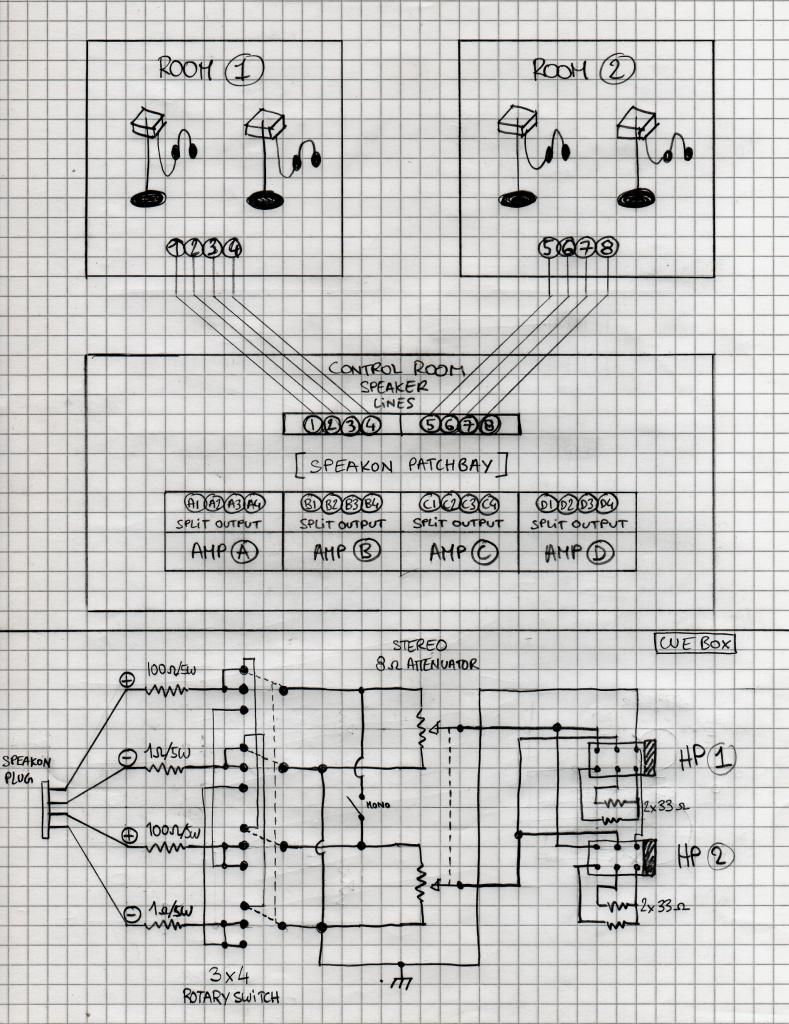Hi all,
i did search on the forum, but no success.
if i want to drive a headphone set from a stereo power amp of lets say 100 Watt per channel, and insert a mono switch in beween ? is it better to add a summing netwotk (with high wattage resistors) or just combine the signals hardwire?
Ok, let me explain why.
we are fed up at the studio of having to constantly install/move 3 different heaphone amps around the (rather small) studio space, and would like to try out a passive setup using power amps instead (we got spare/unused amplifiers and 8 speaker tie lines at the studio that could do the job).
thinking of using a guitar box type eclosure fixed on a round base mic stand, the box would have speakon (2+2) chassis connector underneath , a stereo attenuator, a switch for stereo to Mono and a jack plug. simple and clear.
it means no more sh*tty headphone power supplies with their tiny sh*tty cables, and no more heaphone amps laying on the floor eating up space, just one cable.
so to add a mono switch, would it be best to combine the signals directly at the switch or use resistors, i'm sure both would work, just wondering which is the better solution.
thanks!
jon
i did search on the forum, but no success.
if i want to drive a headphone set from a stereo power amp of lets say 100 Watt per channel, and insert a mono switch in beween ? is it better to add a summing netwotk (with high wattage resistors) or just combine the signals hardwire?
Ok, let me explain why.
we are fed up at the studio of having to constantly install/move 3 different heaphone amps around the (rather small) studio space, and would like to try out a passive setup using power amps instead (we got spare/unused amplifiers and 8 speaker tie lines at the studio that could do the job).
thinking of using a guitar box type eclosure fixed on a round base mic stand, the box would have speakon (2+2) chassis connector underneath , a stereo attenuator, a switch for stereo to Mono and a jack plug. simple and clear.
it means no more sh*tty headphone power supplies with their tiny sh*tty cables, and no more heaphone amps laying on the floor eating up space, just one cable.
so to add a mono switch, would it be best to combine the signals directly at the switch or use resistors, i'm sure both would work, just wondering which is the better solution.
thanks!
jon





